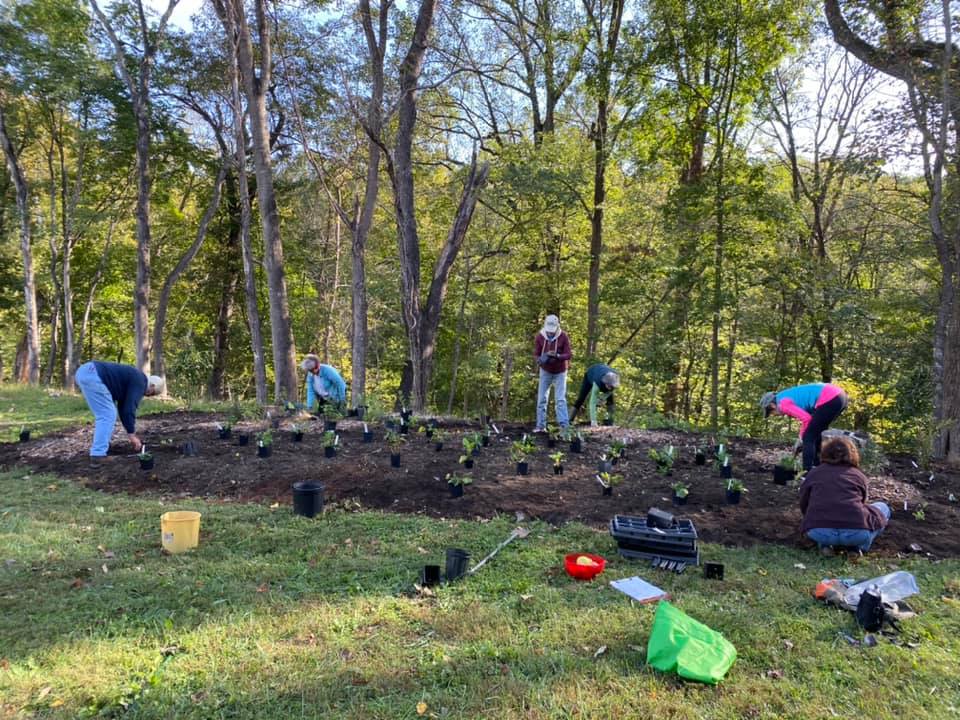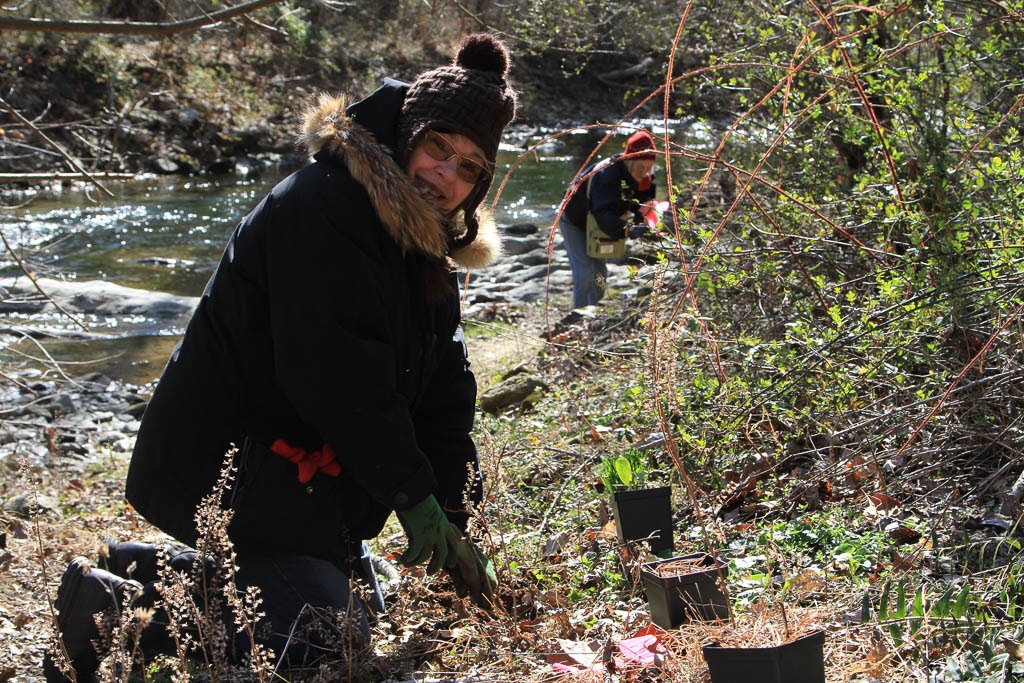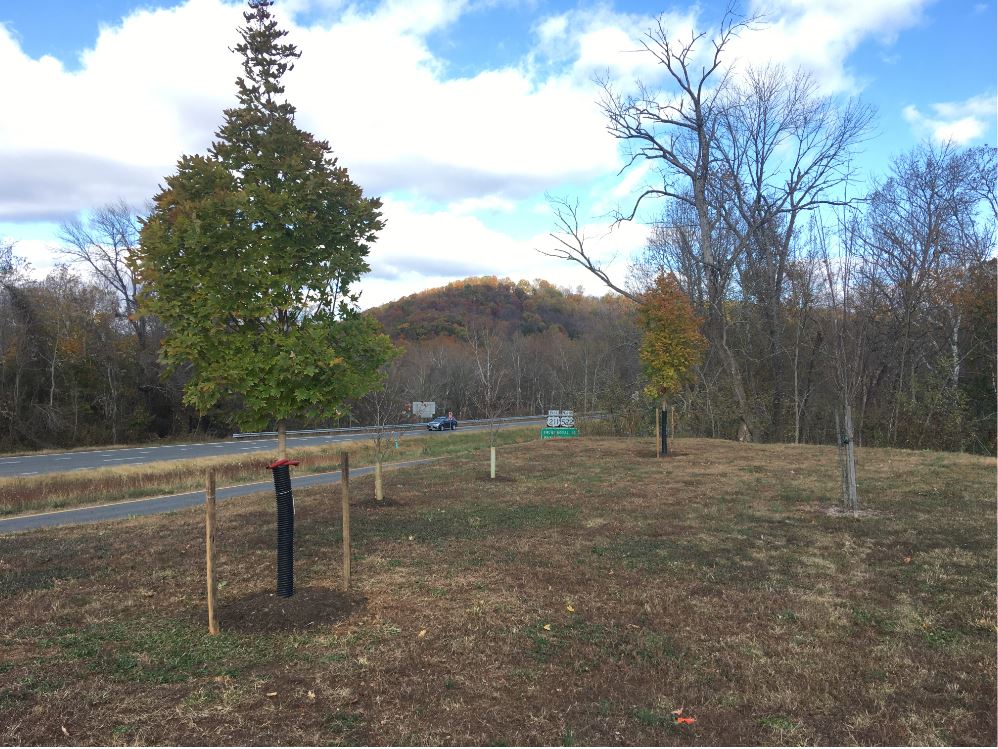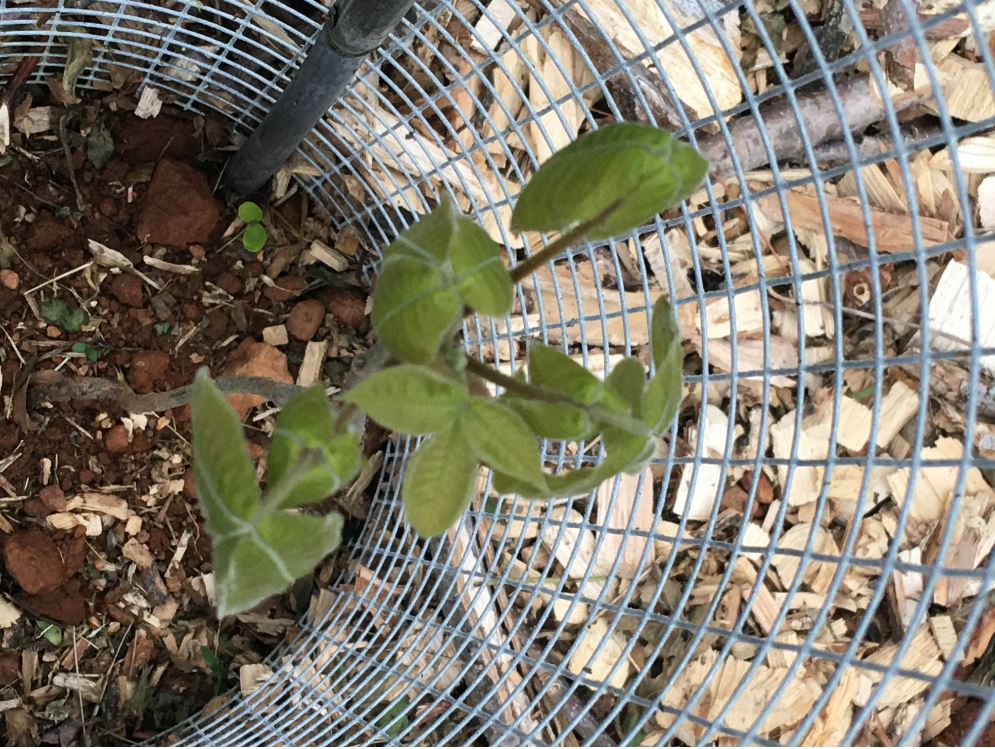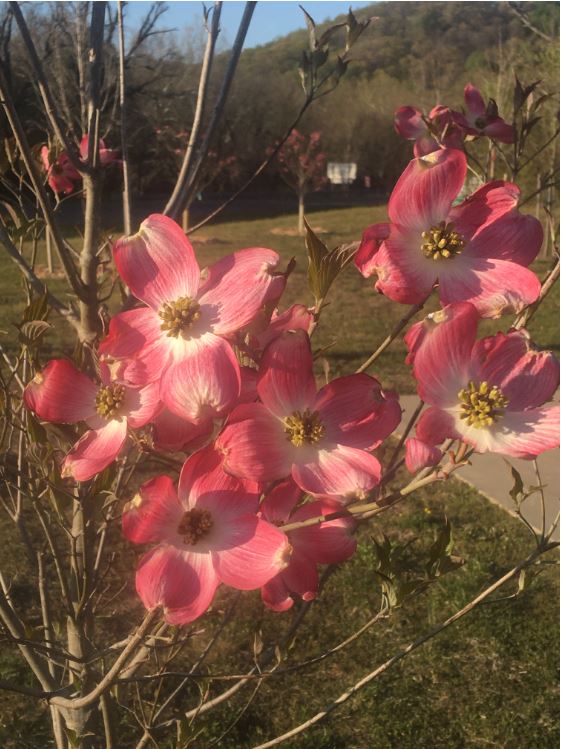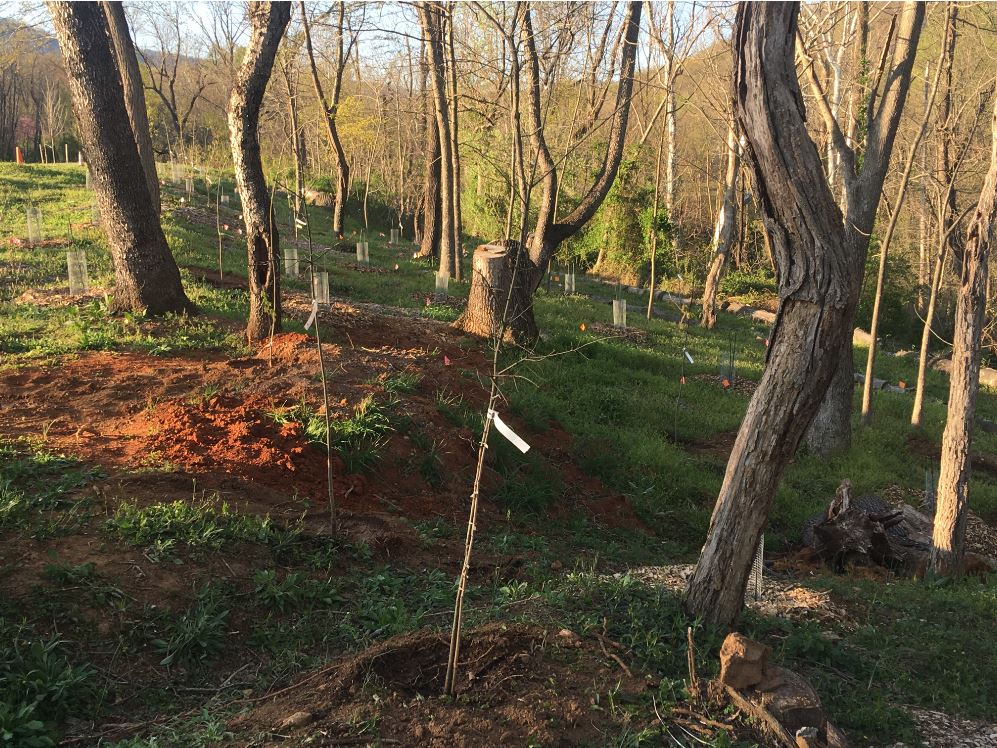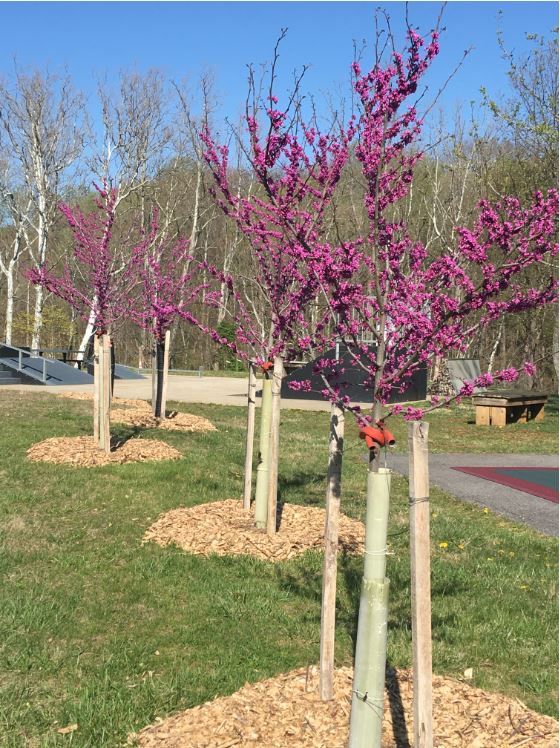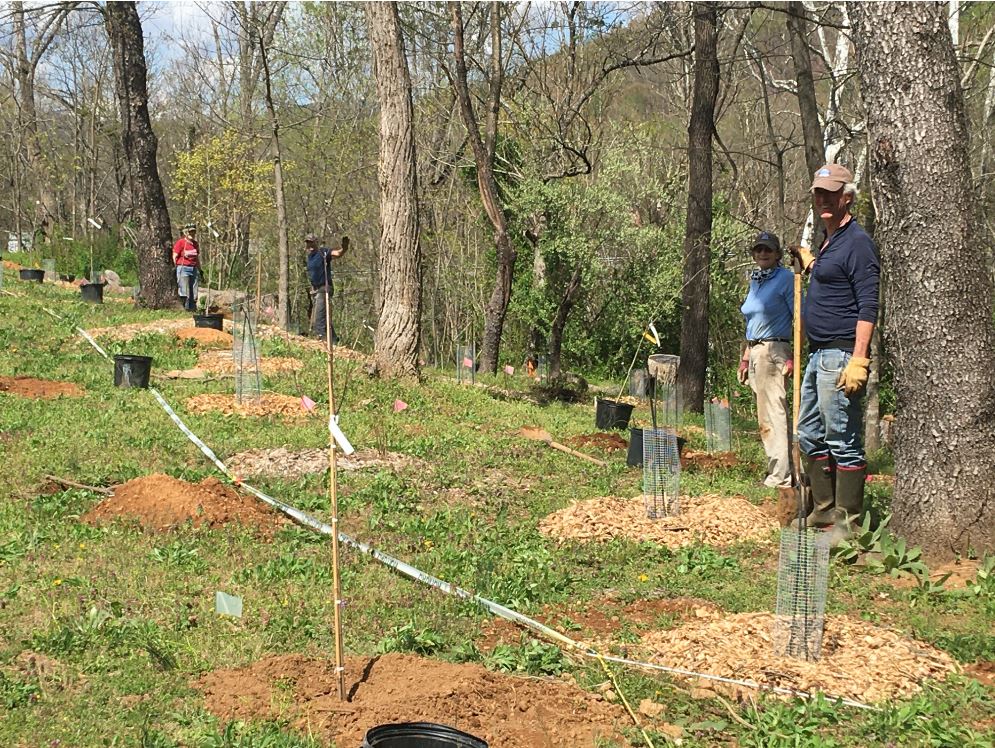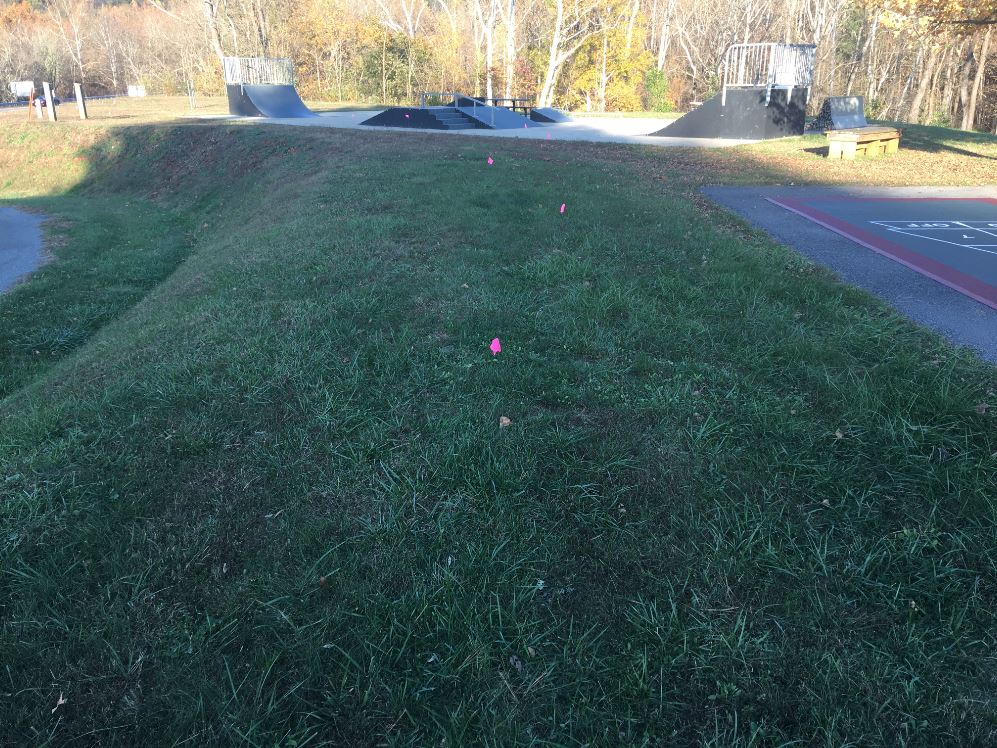
Rappahannock County Park’s Big Improvements
Along the Rush River in the town of Washington, just a few miles east of the Shenandoah National Park, the 7.3-acre Rappahannock County Park is best known by locals for its pirate-ship playground, skate park, tennis courts, and picnic area. But, it has also come into focus recently for its natural beauty. Naturalists love it for counting birds and butterflies. The International Dark Skies Association has recognized the park for the remarkable star-gazing experience it offers, calling it a mini-gateway into the historic Virginia Blue Ridge foothills, one of the darkest remaining areas left in the eastern United States. And perhaps the park’s most charming element has always been the serenity of the forest and the river there.
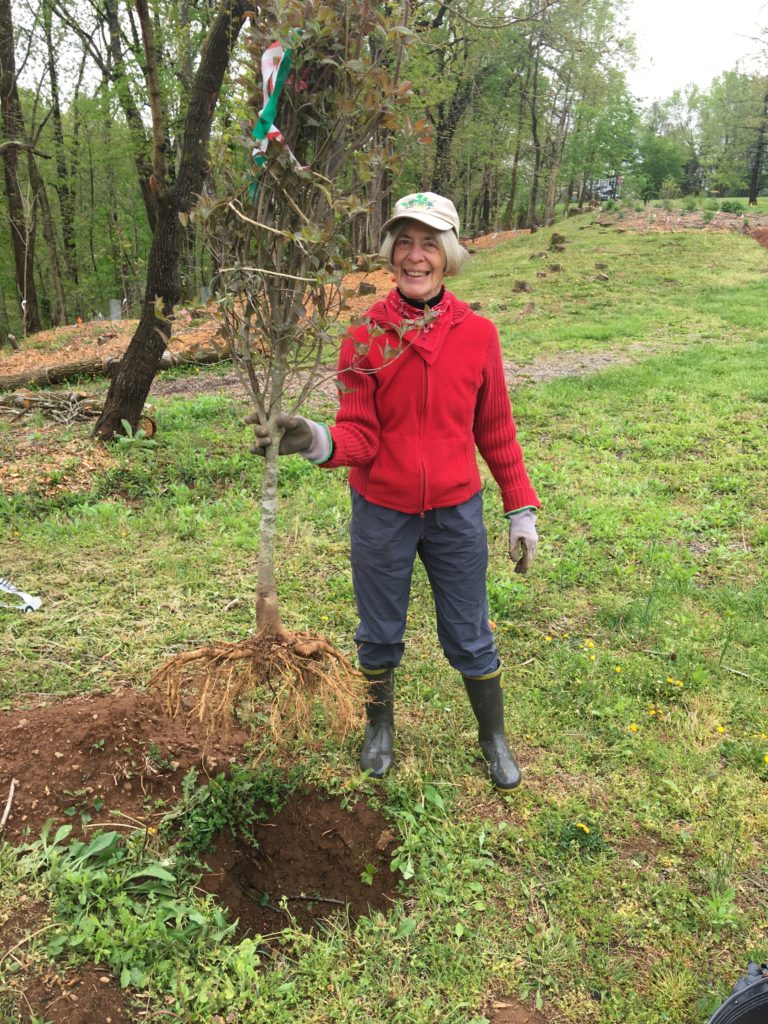
Not long ago, you might easily have looked right past the Rush River Trail through the woods; it was grossly overgrown with invasive plant species like oriental bittersweet, tree-of-heaven, and Japanese honeysuckle. These invasive plants are known “tree-killers,” and over the years have crowded or choked out many native trees and shrubs in the park’s forest. But now, the little park has gotten a makeover, in the most natural way, with the help of a $20,000 grant from PEC’s Krebser Fund for Rappahannock County Conservation.
“I want the park to be a model of environmental stewardship,” says Torney Van Acker, a local resident who joined the board of the Rappahannock County Recreational Facilities Authority, the local advisory council for the Park and its management, in 2018. “I see a vision of when the park is free of invasives and has a healthy tree canopy. And there are other great potential projects like creating an ADA-compliant walkway as a nature trail for visitors of all ages.”
These ideas, and others, have now been worked into a new master plan for the park, made possible by the Krebser Fund grant. And work is already underway! Volunteers have pulled invasives, cleared trails, felled dead ash trees and picked up litter. Earlier this spring, the park’s advisory council partnered with Friends of the Rappahannock and PEC to plant 145 new native trees. An important section of the park’s right-of-way that borders Highway 211 has been planted with flowering redbuds for the spring and sugar maples that will boast bright red foliage this fall.
“It’s a very rewarding experience when you transform something into what it is meant to be…. What’s happening at the park now is that you can see the native plants and trees coming back each season,” says Torney.
While there is still work to be done, the grant from PEC’s Krebser Fund helped ensure there is a plan that guides future stewardship and capital improvements (to address aging buildings, access for all abilities, etc). In the interim, the removal of invasive species has opened up the forest edge and made access to the trails easier for the public to enjoy. Hats off to the Park’s advisory board, which can be credited with a lot of ingenuity and hard work. It has sparked a lot of new ideas for how to make the park more beautiful and more accessible for others!
PEC’s Krebser Fund for Rappahannock County Conservation was established in 2003 to support conservation easements, environmental stewardship, and educational activities in Rappahannock County. In 2014, the Rappahannock County Conservation Alliance merged with the Krebser Fund to pursue projects with their shared mission. To date, PEC has invested more than $300,000 through the Krebser Fund in various land conservation, land stewardship, and public outreach projects that serve to enhance the rural and scenic value of Rappahannock County, as well as to protect and restore its land and water resources.

Setting plants for a pollinator garden. Photo by Torney Van Acker. 
Ruth Welch planting bluebells. Photo by Torney Van Acker. 
Maples in Plot C. Photo by Torney Van Acker. 
One of 50 hickory seedlings in plots D and E. Photo by Torney Van Acker 
Pink dogwoods. Photo by Torney Van Acker. 
Plot D after tree planting. Photo by Torney Van Acker. 
Redbuds in Plot A. Photo by Torney Van Acker. 
Volunteers planting trees in plot D. Photo by Torney Van Acker. 
VDOT ROW marked for planting. Photo by Torney Van Acker.
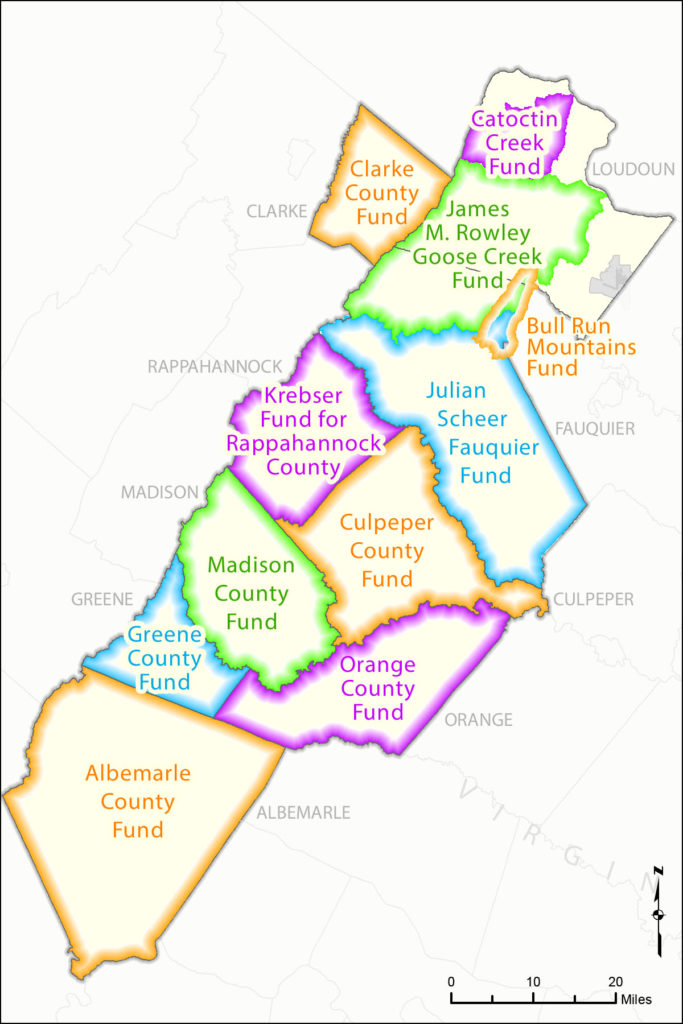
PEC Conservation Funds
This map shows donor-designated funds created for on-the-ground conservation and restoration projects in specific geographic areas within The Piedmont Environmental Council service territory. The majority of the funds are held by the Piedmont Foundation, a separate 509(a)(3) charitable organization, established to hold and manage special funds in support of PEC’s mission. Learn more at piedmontfoundation.org
This article appeared in The Piedmont Environmental Council’s member newsletter, The Piedmont View. If you’d like to become a PEC member or renew your membership, please visit pecva.org/join.

